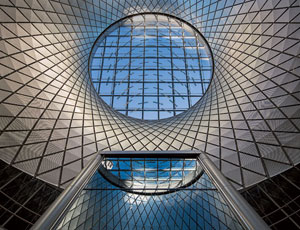Downtown Looks Up:
A multifaceted design team creates a 21st-century transportation hub for New York while preserving an important piece of the city's history.
By Architectural Record
Learning Objectives:
- Describe the various analytical studies conducted by the Fulton Center design team, including those for crowd simulation and computational fluid dynamics.
- Explain the relationship between the sky-reflector net and Fulton Center's ventilation strategy.
- Explain why the Corbin Building was innovative for its time.
- Describe the techniques used to structurally reinforce the Corbin Building and preserve its elaborate decoration.
Credits:
This test is no longer available for credit
At the most basic programmatic level, Fulton Center—New York's new $1.4 billion transit hub—is a way for commuters to descend 40 feet from the street to the platforms for subway lines that overlap each other in a mazelike tangle in Lower Manhattan. One of the primary aims of the station, which opened in November and was conceived in the wake of the September 11 attacks, was to simplify access to these platforms. It was also intended to ease the cumbersome transfers among the lines, which were originally built by separate and competing commercial entities, some more than a century ago. However, its design team set its sights on grander ambitions. Click here to read about it »

Photo © James Ewing
Originally published in Architectural Record.
Originally published in January 2015






